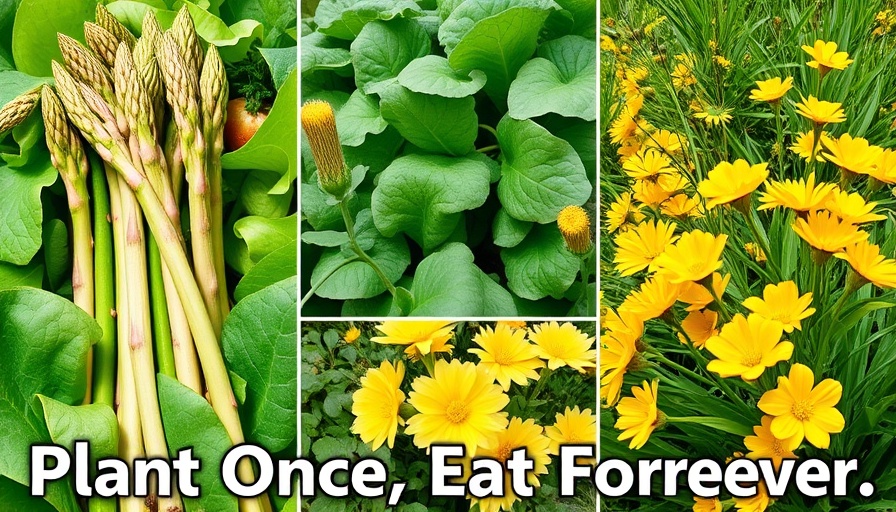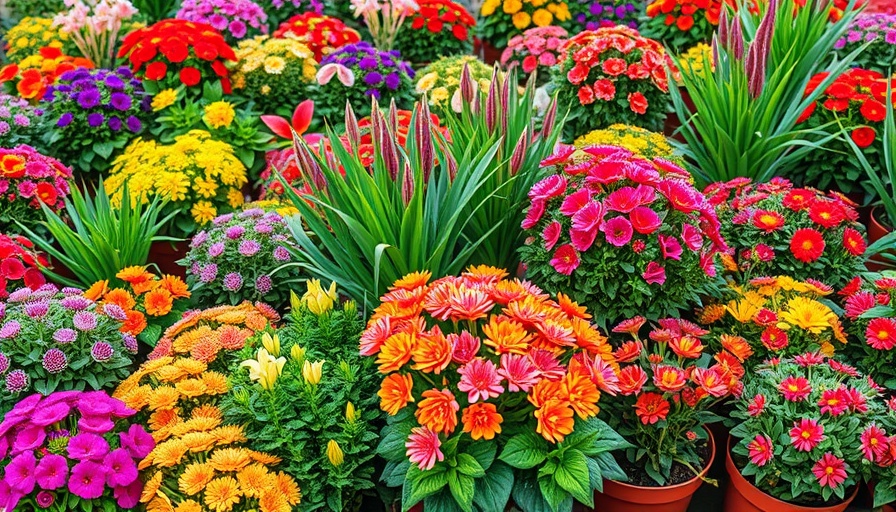
The Urgency of Home Gardening Amid Economic Uncertainty
With inflation impacting groceries and supply chain disruptions continuing to plague many of our favorite products, gardening has become not just an avenue for leisure but a vital resource for food security. As Emily Foster highlights, community and home resilience in these turbulent times starts with growing our own food. Starting high-dollar crops can significantly mitigate the stress of rising costs and deepening economic instability. This is your chance to take control and ease the burden on your grocery budget.
In 'Seed Start High Dollar Crops to Recession Proof Your Garden', the discussion dives into the benefits and processes of home gardening, exploring key insights that sparked deeper analysis on our end.
High-Demand Crops to Consider for Your Garden
Identifying which crops yield the most financial benefit can greatly influence not just your garden's viability but also its productivity. Crops such as tomatoes, artichokes, and asparagus are not only popular among local consumers but also offer higher profit margins. Considering that these crops are often purchased at premium prices in stores, growing them at home can drastically reduce expenditures while providing fresh produce right from your yard.
Steps to Start Your Seed-Starting Journey
The video "Seed Start High Dollar Crops to Recession Proof Your Garden" emphasizes an action plan that begins right now. First, gather the seeds for your high-demand crops. It's essential to understand where your seeds are sourced from, as most small seeds come from overseas. Local production is often limited to larger seeds like corn and beans, and tariffs can inflate prices. Starting your garden immediately, you could have fresh produce ready in as little as three weeks. This quick turnaround makes an impressive case for home gardening.
Optimizing Space: Multi-Seeding Techniques
In small urban gardens or on balconies, optimizing space is crucial. Using techniques like multi-seeding can enhance your yield without requiring additional space. By placing multiple seeds in a single cell, like the garlic chives discussed in the video, you maximize the productivity of your limited gardening area.
Understanding Timing and Growth
Emily emphasizes planning your planting on a timeline that suits your lifestyle. For busy urbanites in Metro Vancouver, the option to choose crops with shorter growth cycles, such as arugula, can yield significant returns without the lengthy wait. Meanwhile, slower-growing plants like asparagus require a bit more patience—but they ultimately reward your investment with multi-year harvests.
Embracing the Community Gardening Movement
Neighborly initiatives can elevate your gardening experience. Whether through community gardens or sharing excess harvests, this shared effort cultivates stronger neighborhoods. The rise in community interest not only creates a sense of belonging but also fosters collaborative learning—empowering everyone to gain knowledge and skills around food production. It encourages neighbors to view edible gardening as a valuable resource.
Action Steps: Transforming Your Garden Today
If you're interested in starting your own garden and potentially recession-proofing your food supply, make haste with your planting. Gathering resources from Emily's playlist offers a comprehensive guide to growing your own food, including the aforementioned high-value crops. Whether you're a novice or seasoned pro, engaging deeply with these materials can empower you to turn your local plot into a sustaining food source.
While challenging times bring uncertainty, your journey toward self-sufficiency can preserve your community spirit and kitchen budget alike. Start planting today and reap the benefits tomorrow!
 Add Row
Add Row  Add
Add 




 Add Row
Add Row  Add
Add 

Write A Comment